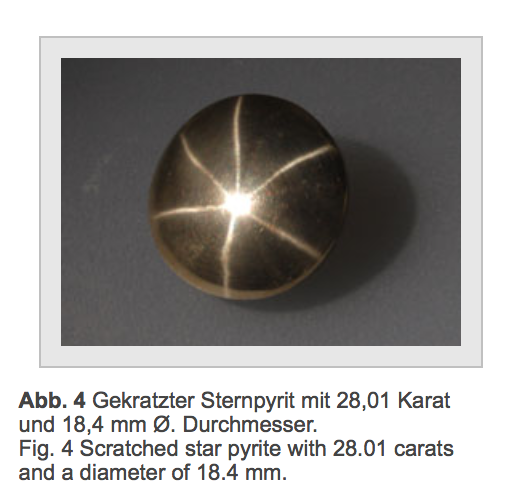I have a 12mm “Star” Rutile
Does anyone have info on the cause of the star
Given the parallel lines visible perpendicular to each leg, I highly suspect intentional scratching to artificially induce a star effect. 
Could the “scratching” be a result of polishing - rather than an intent to induce asterism
I’ve cut and polished thousands of cabochons in a wide variety of materials and never encountered this effect. Knowing how the polishing process works, I cannot see how this effect could be incidentally induced. And, I have been proven wrong in the past so I am always open to learning!
Looks like the doped stone was spun against a fixed abrasive then polished . I have done this to make buttons and it is hard to get rid of the swirl marks you must hand sand across the rings then polish . Never did it for star effect but could see that some one might.
hmmm no the groves dont look like rings in these photos sorry think i am wrong on this .
If it is the real Mckoy the you have a very good gem, however, I have never seen an asterisk that is so defined. I would be thinking synthetic or modified in some way. Since I cannot actually visually hold it, I may also be very wrong - but, it looks too good to be real.
Trev
I think the stone is very possibly synthetic. Natural star rutile stones would not normally be so symmetrical or the star as defined or central. The curving is probably due to the method of synthesis - which is characteristic of verneuil flame fusion synthetics. On a natural, the banding should normally be hexagonal (rather than curved) and parallel to the stones natural faces. This is what actually causes the asterism effect.
Came back from CGL-GRS doped CZ with Induced Star effect
Material has never been documented